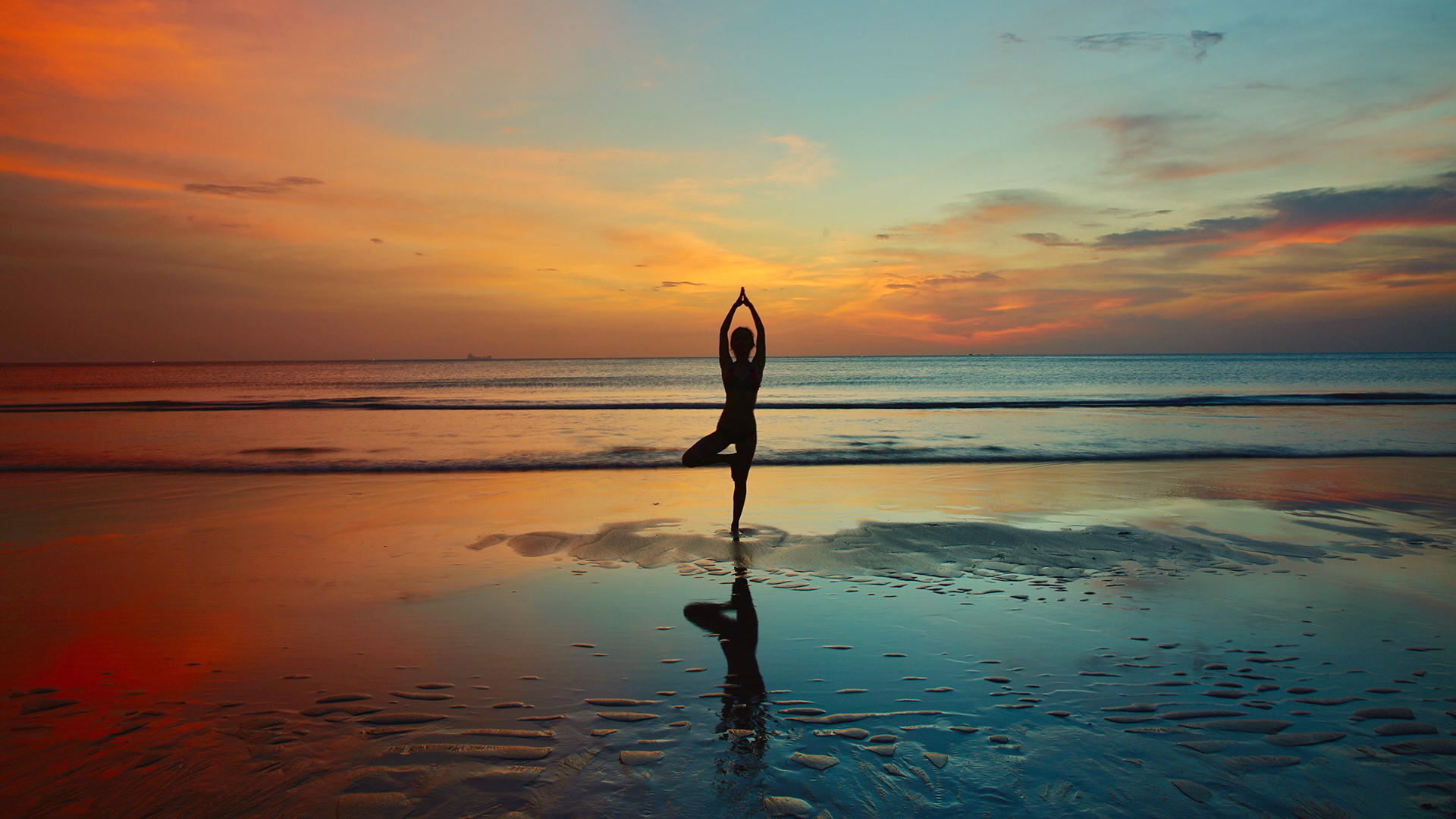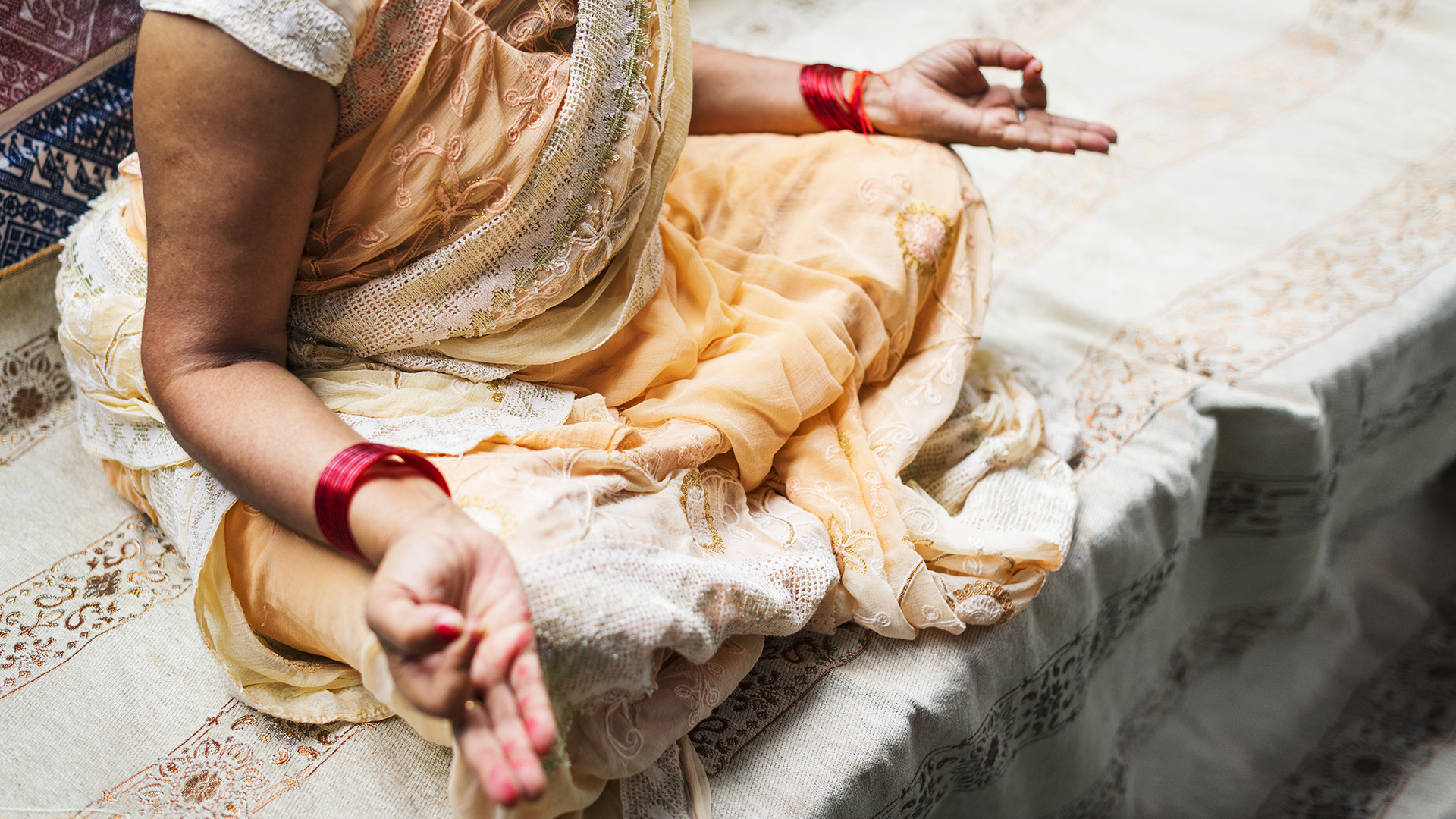When did yoga originate?
When did yoga originate? We explain everything you need to know about the ancient practice.

Yoga is a practice that focuses on flexibility, breath work and strength – but when did yoga originate? People often practice yoga to find mental wellness and stillness in addition to the physical benefits it offers. Yoga is one of the few exercise routines that focuses on developing unity and harmony between the mind and body.
Such is yoga’s popularity that you’ll find it everywhere, whether it’s classes at your local fitness centre, on television shows and in films, or in social media. Practicing the different types of yoga can be as simple as unfurling your yoga mat in your living room and doing some sun salutations before work.
• Read more: Is yoga good for you?
When did yoga originate? The history
The history of yoga is commonly segmented into four main eras: Pre-classical Vedic, Classical, Post-classical and Modern.
Pre-classical Vedic period
There is a lot of speculation about the exact period in which yoga originated, with some saying it came into being in some form 5,000 years or more ago. According to information from the Indian Government’s Ministry of External Affairs, the earliest theory of yoga was developed by the Indus-Sarasvati civilization in Northern India around 2,700 BC.
The Sanskrit word "yuj" which "yoga" is derived from, means "to join" or "to unite" and was first mentioned in the Rigveda, the earliest of four religious texts known as the Vedas. The Rigveda is a collection of Indian hymns written in Sanskrit and is one of the holiest and most sacred texts of Hinduism. It is thought to have been written around 1500-1200 BC, according to Britannnica. Tips for controlling one’s breath and balancing energies were discussed in the Vedas. Yoga-like practices are also described in other Vidic Sanskrit texts known as the Upanishads.
Get the world’s most fascinating discoveries delivered straight to your inbox.
According to Vimala Thakar’s book Glimpses of Raja Yoga: An Introduction to Patanjali's Yoga Sutras, Indian people would go to a "rishi", or enlightened person, to guide them in the teachings outlined in the Veda. Yoga in this period was known as Vedic yoga. Ceremonies that encouraged mental fortitude were led by the rishi.

Classical period
Yoga then moved into what’s known as the Classical period (roughly between 500 BC to 800 AD according to the Indian Government’s Ministry of External Affairs). During this time, many new texts systematically laid out the ways to practice yoga. A pioneering text called "The Yoga Sutras" is widely attributed to the sage Patanjali in ancient Tamilakam.
This collection of Sanskrit musings about the theory and practice of yoga is seen as a must-read for yogis and introduced the concept of "ashtanga" or the "eight limbs" of yoga, also known as Raja yoga. The eight limbs are:
Patanjali is renowned as the forefather of yoga and his eight-step system is the backbone of modern yoga practice.
It’s also thought that Hinduism and Buddhism (which are thought to have had origins at a similar time) could have played integral parts in the formation of coherent systems of yoga. In fact, yoga is one of the six schools of philosophy within Hinduism, which helps to answer the question: is yoga a religion?
Post-classical period
Centuries after Patanjali’s seminal text, somewhere around 800 to 1700 AD, yoga was still developing. Perhaps due to the practice’s religious origins, the benefits to the mind had been the main focus for centuries. However, yogis wanted to explore how yoga improves one’s physicality. They deemed the physical more important than the mental in the journey to achieving enlightenment.
This brought about changes in the types of yoga that were practiced. According to Med India, yogis within this period developed body-centered yoga practices such as Tantra yoga and Hatha yoga. Hatha was a Sanskrit word for force, reflecting how important the physical is in this type of yoga.
Modern period
As reported by Yoga Journal, from the late 1800s, yoga masters began to travel to Europe and America to share the teachings of yoga. The first Hindu teacher to lecture about yoga was Swami Vivekananda in 1893. His teachings were received warmly and curiously by the Western intellectuals. Scholars such as Ralph Waldo Emerson and Arthur Schopenhauer were among the audience of Vivekananda’s lecture. Literature promoting Hatha yoga was written by yoga masters such as Tirumalai Krishnamacharya and Swami Sivananda. Sivananda has published over 200 books on the theory and practice of yoga. Krishnamacharya went on to open the first Hatha yoga school in Mysore, India in 1924. Sivananda established the Divine Life Society in 1936 to teach the philosophies of Hinduism, which included yoga.
Indra Devi was the first woman to study under Krishnamacharya. She went on to teach the first yoga classes in China. Subsequently, Devi opened one of the first yoga studios in Hollywood, in 1948. She had many celebrity pupils, such as Gloria Swanson, and advocated yoga as exercise and stress relief. Devi was nicknamed the "first lady of yoga".
Following Devi’s success and the boom in the fitness industry, many other schools were founded in the 20th century. These include Bikram Choudhury’s Bikram yoga and Sivananda Vedanta schools of yoga.
• Related: Best resistance bands
Why is yoga so popular?
One of the aspects that really catapulted yoga into the mainstream was its use as a form of exercise. The blending of Western gymnastic styles with classic yoga poses took off in the 20th century. Yoga developed into a multi-billion dollar industry, worth an estimated $80 billion dollars globally. According to Statista, the yoga industry’s revenue in the United States was $11.56 billion in 2020, up on the $9.09 billion revenue seen in 2015.
Meanwhile, the United Nations Assembly announced in 2015 that the 21st of June was the "International Day of Yoga", to be celebrated annually. The following year, yoga was declared by UNESCO as a practice that has an "intangible cultural heritage". This meant that yoga was officially recognized as being an integral part of Indian culture.
Rachel Ayeh-Datey is a freelance writer and senior researcher in the advertising industry who is based in London in the United Kingdom. She covers a variety of subjects including music, LGBTQ+ issues and Black British history. Rachel received a bachelor's degree in History from the University of Southampton in 2016.



